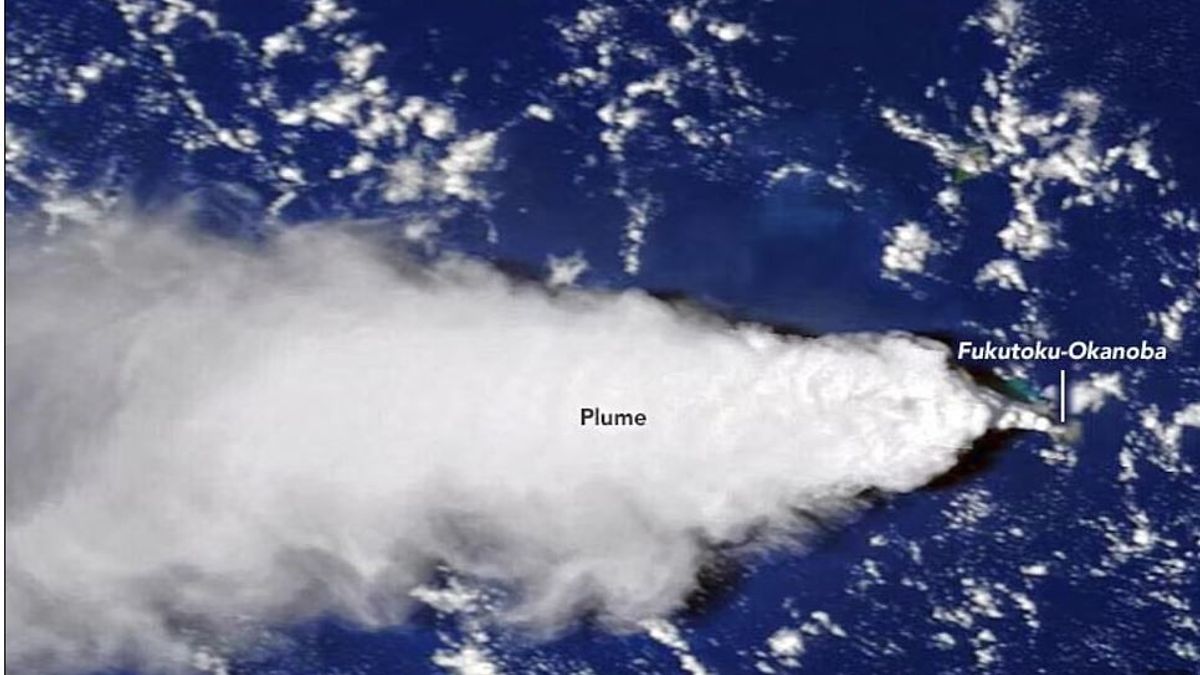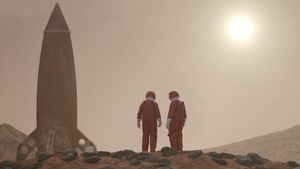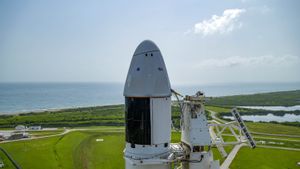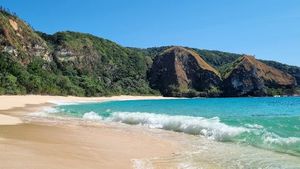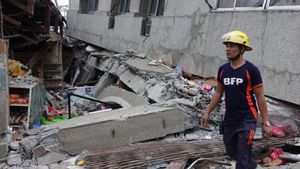JAKARTA - NASA has shared incredible satellite imagery of Japan's underwater volcano, Fukutok-Okanoba. The image shows as the mountain shoots plumes of gas and steam from 80 feet below sea level and into the lower stratosphere.
The image was taken by the Japanese geostationary satellite Himawari 8 and NASA sensors on Landsat 8 shortly after the eruption on August 13. Volcanic ash rose 54,000 feet above sea level during the explosion and is still rising days after the initial eruption.
The Japan Coast Guard stated that 'the eruption was so large that it could not be observed closely,' and called for vessels navigating and flying aircraft in the vicinity to exercise caution.
Two days after the incident and as the smoke cleared, the coast guard caught a glimpse of a new island formed from the eruption, which was named Niijima, or 'new island'.
The Japanese Coast Guard has been observing patches of milky blue water in the Pacific Ocean, about three miles north of South Iwo Jima Island, for the past decade.
It originates from an underwater volcano erupting from below the surface, but on August 13, a plume of smoke broke loose and flew 10 miles into the sky.
Andrew Tupper, a meteorologist with Natural Hazards Consulting and specialist in aviation hazards, said in a statement: "What is remarkable about this eruption is that it went straight from an underwater event into an eruption cloud that reached the lower boundary of the stratosphere."
'It's not very common for this type of volcano. We usually see low-level plumes from undersea eruptions", he said.
Fukuoka-Okanoba has also left its mark on the ocean surface, creating the outline of a new bracket-shaped volcanic caldera island.
The volcano has created mortal islands of ash and pumice in the past that eroded shortly after its formation, and NASA said it was unclear how long the new formation would last.
The past addition of Fukutoku-Okanoba to the Pacific seascape has proven to be only temporary, however, with the islands first appearing in 1904, 1914, and 1986 after they were all lost to erosion.
Whether or not Niijima survives will largely depend on how long the eruption lasts and, in turn, what type of rock the small landmass eventually covers.
The emergence of new islands in the region is not without precedent. In 2013, for example, an eruption formed a new island that eventually merged with nearby Nishinoshima to form a mass that temporarily resembled Snoopy from Peanuts.
"The 2013 eruption started with a Surtseyan-type eruption and cone formation in shallow seas ~20 m deep, ~400 m southeast of existing Nishinoshima Island," scientists from the University of Tokyo shared in a study published in The American Geological Society.
“When a small island was discovered by the Japan Maritime Self-Defense Force on November 20, 2013, it was 150×80 m in size”, they said.
SEE ALSO:
The eruption of 'Surtseyan' is named after the island of Iceland which was formed in the same way in 1963.
This occurs when older lava cools into meanders, mounds, tubes, and grooves on the island's surface, forcing newer lava into grooves before it has time to reach the water and cool.
The English, Chinese, Japanese, Arabic, and French versions are automatically generated by the AI. So there may still be inaccuracies in translating, please always see Indonesian as our main language. (system supported by DigitalSiber.id)
